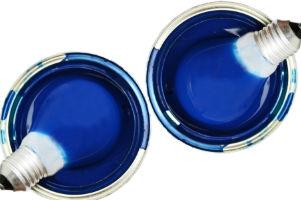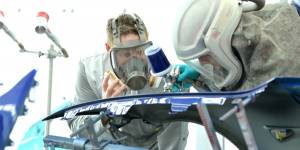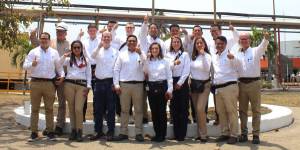 In this first part, we will discuss some design basics and success stories that relate to how our industry can leverage the development of its own technologies.
In this first part, we will discuss some design basics and success stories that relate to how our industry can leverage the development of its own technologies.
by M.Sc. Ph.D. Julián A. Restrepo R. *
I must admit that I have already dealt in previous publications with some philosophical topics that I have concatenated with the world of coatings and although in principle the topics seem dissimilar, when making a deep reflection on the future of its formulation and design, I find myself continuously with concepts such as the "Nash Equilibrium", "Ockham's Razor", the idea of the "Eternal Return" and "Murphy's Law" [1], among many others.
Actually, contextualizing these concepts, perhaps mostly philosophical with the world of coatings, may be contradictory, but it is enough to understand them better, to find phenomena and situations that lead us to paradoxical situations. To tell the truth, I have questioned myself about my lack of creativity in this regard, by not integrating new elements more easily into this framework, even more so considering the buoyant interest in the topics of creativity and innovation experienced by our technological environment and especially our society1, by offering a growing impulse, for example, to young entrepreneurs with new ideas and for the creation of new products and companies.
Therefore, dear reader, as I have done when I have addressed this type of topic, I encourage you to be patient and have your mind open to new ideas, since it is a set of topics with which we will try to bring new elements to the analysis in the world of paintings and coatings. This taking into account an industry dynamic that gives more and more importance to Sustainable Development, the improvement of safety and the economic margin of the products offered, all in an increasingly competitive and Globalized environment.
Design basics
We can affirm that the design process involves a very important action: The act of thinking2. In the same way, the fact of wanting to reach a goal, in the resolution of problems or in other cases, and in general in ordinary life, obstacles arise (which we could call factors) [2]. Properly knowing these factors can lead us to the generation of various ideas about the possible solution of the problem in the most advantageous way possible.
Unfortunately, modern life shows us that normally the act of thinking is not given due importance. And just like, like the now fashionable green tea, knowing how to think provides us with many benefits, and you do not have to be scientific for it. As we will see in this discussion, the future of coating design is very closely related to the generation of new ideas, but in many cases, it seems that our industry is becoming increasingly lacking in them.
We will start by defining, in a curious way, what does not lead to a proper design, where we must take into account the concept of design anti-pattern, which is a design pattern that invariably leads to a bad solution to a problem. Anti-patterns are negative solutions that present more problems than those they solve [3].
Also, this makes us reflect on the fact that when starting in reverse, this allows us to mention another important concept: that of "Reverse Engineering". For this, in a reflective way, we must recognize that Chinese manufacturers are doing today what the Japanese did a few decades ago: Take a current product, make some changes and generally improve it to sell it at a lower price [4], which for some is also considered as a type of innovation.
Historically, after World War II, the Japanese began to obtain all the technical and scientific information available in the Western world. They acquired various technological patents and obtained the most modern machinery of those times. So did the Soviets (but in their case, it was soon ruined because of the lack of maintenance and the improper use to which they were subjected). The Japanese, on the other hand, disarmed it to study it and discover even its minor flaws and flaws. Then they began to produce better models at a lower price than the originals [5].
Design through copying
The Spanish artist Pablo Picasso, considered one of the great geniuses of twentieth-century painting and who exerted a great influence on other great artists of his time, stated [6]: "Great artists copy, geniuses steal." It is a phrase that must be analyzed carefully, since behind it hides a very great truth! [7]. It is well known that all the greats of any subject begin by being influenced by the others who set trends, so we can see people like Jimi Hendirx making versions of Chuck Berry, Salvador Dalí being influenced by Bosch, and so on among various examples of how some were influenced by others.
There are those who affirm that, in various artistic fields, copying, versioning or imitating great works we learn to understand them, to discover their intricacies and little by little we are making our own a series of resources to which, possibly, we would not have arrived if we had not taken this type of work as a reference [7]. Therefore, it can be said that copying is part of the learning process, and since one should never consider that he has learned everything, therefore, copying is a way to always be learning things.
In other fields (design, for example), the act of copying is another resource, but if you manage to give it the so-called personal touch, instead of a copy, it is said that you have a version.
On the other hand, in an analysis of the scheme of modern design3 at the productive level, we find that copying is nothing more than an old custom based on a balance of cost/benefit analysis: Research and Development (R&D) cost expensive and take time, and for small to medium-sized companies there is no faster and more effective way than copying. Remember that many companies, as in the case of the paints and coatings industry, are constantly very attentive to the products of competitors, and after seeing the "new products" in the market, run to develop similar products at lower costs.
At this point, we can give a first definition of what is the concept of "Reverse Engineering", in which it is about intuiting, from a result, how that result has been reached. Naturally, and although it is a mode of copying, it is a very useful process because it is one of the ways to innovate at a low price, making an anatomical study of various products / processes of competitors, for example [8].
The "Reverse Engineering", in brief
"Reverse Engineering" is a method of solving problems, and its application to something implies deepening the study of its operation, to the point where it can be understood, modified and improved its mode of operation [9].
The goal of "Reverse Engineering" is to obtain information or a design of something from a product accessible to the public, in order to determine what it is made of, what makes it work and how it was manufactured [8].
The method is so named because it moves in the opposite direction to the usual engineering tasks, which consist of systematically using technical data to create or elaborate a given product. In general, if the product or other material that was subjected to "Reverse Engineering" was obtained properly, then the process is legitimate and legal.
As mentioned above, it is therefore accepted that "Reverse Engineering" was born during the Second World War, both in the case of Japan, and in the case of the other Allied countries, since when the armies of the Allied countries seized huge amounts of war supplies, mainly of German origin, such as airplanes, tanks, engines and various war machines to improve theirs through an exhaustive analysis.
Thus, thanks to German ingenuity and scarce resources during the "great war", today we can enjoy various advances achieved during that period: The Germans developed fuels and synthetic rubber, latex resins, the jet engine (or Jet engines) [10], promoted the development of nuclear energy, among other important advances that are still the engine of our society.
The application of "Reverse Engineering" leads to some of the following advantages:
It never changes the functionality of a product, but allows to obtain products that indicate how they have been built (this is in line with the so-called "Nash equilibrium: "the solution to a problem is not the creation of new alternatives, but the coordination to use sensibly those that exist").
Reduces the complexity of systems: trying to understand a product or system facilitates its maintenance and the existing complexity decreases (this goes in favor of "Ockham's razor": "The simplest answer is usually the right one").
It allows to recover or update the lost information (changes that were not documented at the time, for example): over time changes are made that are not usually updated in the representations of the highest level of abstraction, for which design retrieval is used (the loss of information goes in favor of the so-called "Murphy's Law": "If something can go wrong, it will go wrong.")
Detect side effects: the changes that can be made in a system can lead to unwanted effects arising, this series of anomalies can be detected by "Reverse Engineering" (this also goes in favor of the so-called "Murphy's Law").
Facilitate reuse: through "Reverse Engineering": components of possible reuse of existing systems can be detected, being able to increase productivity, reduce costs and maintenance risks (this concept goes along the lines of "the idea of eternal Return": "The universe is cyclical: everything returns and returns eternally ...") [11].
Photo caption:
1. Strictly speaking, this is even more contradictory, considering, for example, the lack of apparent creativity that our television suffers when offering programming, if you will, monothematic: A drug dealer (even if of gringo origin), a famous singer, a reality show ...
2. According to some studies, the brain is "lazy", so it tries to mechanize many of its activities, and in general, we can interpret then, that the same brain does not like to think.
3. The word "modern" strictly speaking, is multiform.
References
[1] (a) Restrepo, J.A., "The Nash Equilibrium, Part I"; Inpralatina, Vol. 17, No. 5, sept./oct. 2012, pp. 23-25; (b) Restrepo, J.A., "Ockham's Razor in the Formulation"; Inpralatina, Vol. 16, No. 4, July/August 2011, pp. 35-38; c) Restrepo, J.A., "The Idea of Eternal Return, Part I"; Inpralatina, Vol. 17, No. 3, May/June 2012, pp. 37-38; (d) Restrepo, J.A., "Murphy's Law, Part I"; Inpralatina, Vol. 18, No. 6, Nov/Dec 2013, pp. 12-15
[2] http://www.taringa.net/posts/info/14132535/el-metodo-cientifico-de-solucion-de-problemas.html
[3] http://msdn.microsoft.com/es-co/library/bb972251.aspx#EDAA
[4] http://www.guioteca.com/autos/por-que-los-chinos-copian-los-disenos-de-autos/
[5] http://www.monografias.com/trabajos10/mija/mija.shtml#ixzz2tRNkT0mH
[6] http://es.wikipedia.org/wiki/Pablo_Picasso]
[7] http://www.waarket.com/es-malo-copiar-disenos/
[8] http://www.lifestylealcuadrado.com/ingenieria-inversa/
[9] http://es.wikipedia.org/wiki/Ingenier%C3%ADa_inversa
[10] http://es.wikipedia.org/wiki/Motor_de_reacci%C3%B3n
[11] http://www.elconfidencial.com/alma-corazon-vida/2014-07-15/nietzsche-el-eterno-retorno-y-el-misterio-de-la-energia-oscura-otra-vision-del-universo_162044/
























Leave your comment